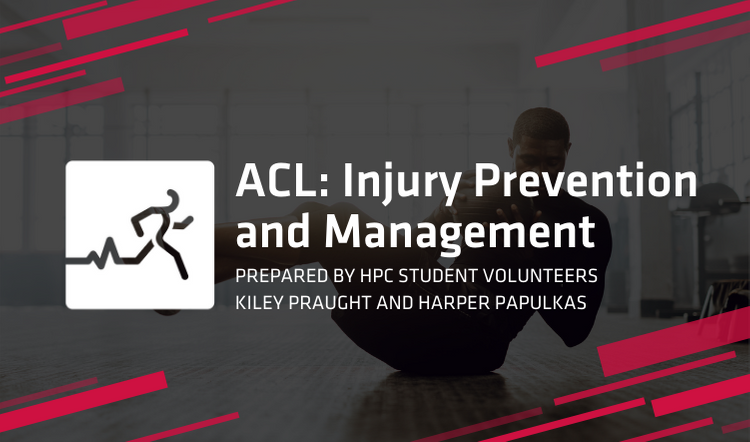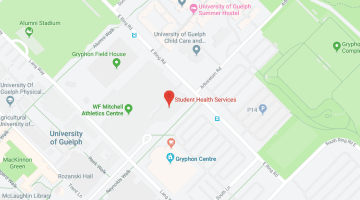

* About the HPC Student Volunteer Program *
Each year, approximately 30 University of Guelph students are selected following a competitive application process to take part in the “HPC Volunteer Program.” This program provides an opportunity for U of G student volunteers to translate their academic knowledge into practice, while gaining first-hand experience and mentorship from the team of certified physiotherapists and chiropractors at the University of Guelph’s Health and Performance Centre. As a result of this exceptional partnership between the University of Guelph and the HPC practitioners, students can gain valuable insight on evidence-based practice prior to graduating from their respective programs. Click here for more information on co-curricular experiential learning opportunities at the University of Guelph [1]. The following article was written by Kiley Praught and Harper Papulkas , members of the 2020-21 HPC Student Volunteer Program.
The Anterior Cruciate Ligament (ACL): Prevention Strategies and Injury Management
(by Kiley Praught and Harper Papulkas)
Overview
The Anterior Cruciate Ligament (ACL) is a ligament located deep within the knee joint that attaches the femur to the tibia. The functions of the ACL include promoting knee stability and resisting excessive anterior movement of the tibia relative to the femur. ACL injuries are common in both elite and recreational athletes; however, they display a wide range in severity. Injury is commonly a result of intense and/or repetitive stress on the knee through actions such as pivoting, high weight-bearing, and frequent jumping.
Commonly reported indices of ACL injury include:
- Hearing a popping sound
- A large amount of swelling at the knee
- Spasms occurring in the muscles around the knee
- Weakness occurring in the muscles around the knee
- Feeling very unstable or losing balance
Strategies to Prevent ACL Injury
There are several precautions an individual can take to reduce the likelihood of ACL injury. Strength training with a focus on the muscles surrounding the knee, such as; the hamstrings, gluteal group, and quadriceps, will help reduce the stress placed on the knee joint structures. Exercises can include weighted squats and lunges. When participating in training or sporting activities, it is essential to maintain proper form in all movements. Improper form in movement increases the stress applied to the knee. Examples of proper form in movements include; landing evenly on both feet, aligning the body with the feet, and keeping the knees shoulder-width apart when squatting or landing from a jump. Finally, regarding specific movements, it is crucial to practice balance. Improving balance results in increased joint stability and postural control.
Some overall lifestyle recommendations for avoiding ACL injury include; taking proper rest time from activity, ensuring to warm-up and stretch with exercise, and maintaining good nutrition. Rest periods are essential to not over-work the knee and weaken the structures making them more susceptible to injury. Scheduling in a proper warm-up and stretching routine reduces stiffness, encourages blood flow, and increases range of motion at the knee. Lastly, maintaining a balanced nutritious diet and staying hydrated ensures the ligament will receive sufficient nutrients to preserve integrity.
Injury Management
If an ACL injury is suspected, there are some immediate things to do to help reduce pain and seek treatment. First, stop any movement at the injured knee, do not attempt to walk or presume activity. Ice may be applied to the injured knee to encourage a reduction in pain and swelling. It is typically recommended to apply ice in 10-20 minutes increments throughout the day. A brace may be placed on the knee to avoid any accidental movement and provide stability.
If an ACL injury has occurred, seeking help from a physiotherapist will be a very vital contributor to a successful recovery. A physiotherapist will help by developing and working through a personalized treatment plan that promotes optimal healing. When working with a physiotherapist, some things to expect may include; a range of motion assessment, electrical stimulation, balance activities, and stretches and exercises. The physiotherapist will likely teach you various stretches and exercises to do at home that will further promote recovery.
